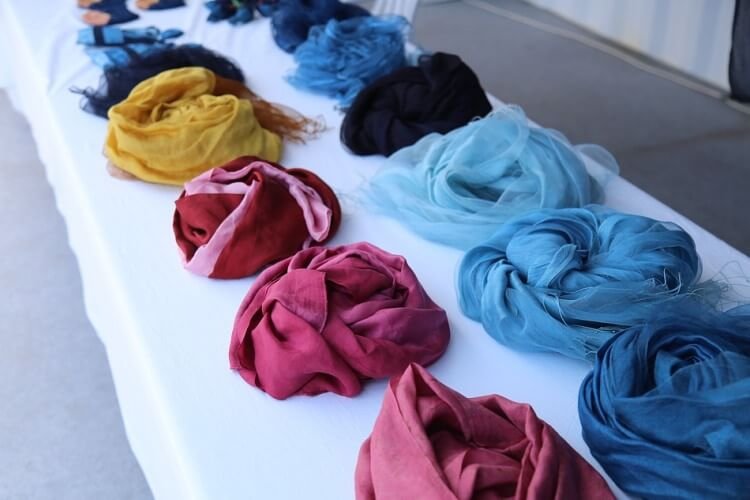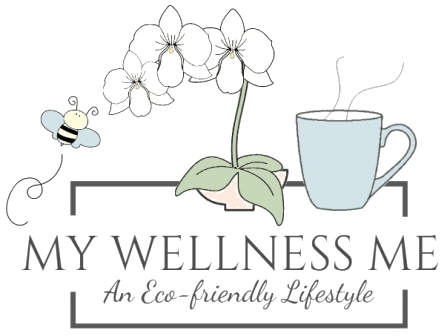What would nature answer if you asked her if she preferred the present day or the medieval period?
Over the centuries, man has evolved and made great strides. He has strived successfully to make things more convenient for himself.
But, how is the environment’s health amidst this frenzy of invention and longing for an easier life?
Our carbon footprint bloats with every ticking second.
We have already covered the hazards of plastic pollution and other mortal enemies to the environment.
For this post, we will look the benefits of natural dyes, their disadvantages, and the dangers of chemical versions used in the textile industry.
Benefits of natural dyes
You don’t have to navigate your boat through terrifying seas to find sources for natural dye.
They are all around you. Some like carrots and tea are readily available. For others, indulge in some sustainable wildcrafting and experiment.
Because they come from nature, these dyes are more environment-friendly than their synthetic counterparts and perhaps offer even greater variety in terms of colors.
Plus, they are biodegradable and do not cause any harm to the environment.
When you realize they come from renewable resources, it makes them a green-living dream.
They also happen to be safe. Not wholly, mind you, but compared to synthetic dyes, natural ones are much better. They are safe for children and adults who are allergic to chemicals used in the industrial process.
What of their disadvantages, do they have any?
Let us find out.
Disadvantages of natural dyes
While the praise and the need for more natural dyes are warranted, some sources (bloodroot, logwood) used for coloring can be poisonous. Also, metal salts used to attach the dyes to the fabric can be harmful.
Another criticism of natural dyes is that they are more susceptible to fading in sunlight. The clothes can quickly become unwearable, making natural dyes less sustainable.
Then there is the cost factor. It takes five grams of synthetic chemicals to dye a pound of cotton, while it takes 230 grams of natural dye to do the same job. This kind of expense is possibly a turn-off for most companies, even if they want to take the eco-friendly path.
Also, colors from natural dyes lack uniformity and consistency, as a plant, fruit, or flower may not generate the same color every time.
Not that any of these issues stopped people in the past from using natural dyes.
Natural dyeing in the Middle Ages
Those who lived in the Middle Ages enjoyed the many benefits of natural dyes. And, to be fair to them, they were quite good at it.
It was not all dull and brown as some period movies and archeological findings have shown. While some dyes were affordable, others expensive and outside the financial means of most peasants.
So, the lowest in the social strata invariably settled for beige and its relative colors.
Back then, it was possible to create a spectrum of vivid colors with plant life such as barks, lichen, mollusks, nuts, and insects. However, only the rich could afford the more expensive dyeing process and the use of a mordant (fixative) that ensured colors stayed on clothes longer.
Also, the color blue was quite popular. One reason for this was the availability of the plant, woad, which produced a natural dark blue color and did not require a mordant.
And blessedly absent were chemical dyes; at least the kinds we have today, with their environmental and health hazards.
The disadvantages of synthetic dyes
Synthetic dyes are less expensive as they do not come from natural sources, and the production process is relatively cheaper; hence, their prevalent usage.
And therein lies the problem.
There is a host of toxic chemicals involved in the textile dyeing process, such as arsenic, copper, formaldehyde, lead, and mercury.
Not all dyes stick to the fabric and high concentrations of them make up textile effluents.
Runoffs from factories produce about 80 percent of all waste from the textile industry, and they are extremely dangerous, particularly to marine life.
The residual waters typically have an excessive level of biochemical oxygen demand (BOD).
Why is that a problem?
BOD does a great job of reducing oxygen in water bodies, which is not good news for fish and other aquatic life.
Then there are the dangers of chemical oxygen demand (COD). In simple words, a high concentration of both biodegradable and non-biodegradable matter that, like BOD, affects sea life.
Also, the colors from dyes that make their way into water bodies prevent sunlight from entering the water, which reduces the rate of photosynthesis.
And it is not only the environment that is in peril.
Why synthetic dye is hazardous to humans
The ones in the line of fire are factory workers who work with dyes.
Constant contact with dye particles results in respiratory problems, and in some cases, affect the immune system.
In rare cases, the immune system is affected to a breaking point. When an individual next inhales dye particles, their body reacts in unpleasant ways. Also known as respiratory sensitization, this can lead to coughing, wheezing, watery eyes, itching, and, in some cases, asthma.
Further, some dyes used in the textile industry are carcinogenic, which means they can potentially cause cancer.
The most notorious of them is the Azo-dye.
Azo-dyes
These are among the most used groups of colors in the textile industry.
Not only are these dyes potentially carcinogenic, but they can also affect animal life and water bodies. They are also no good for the soil; in other words, they can kill off soil organisms and affect soil productivity.
Azo-dyes are also among the primary reasons why sunlight finds it difficult to penetrate the waters where they are present.
That is enough of the grim reality.
Now onto something more cheerful.
Do you know that making natural dye is not quantum physics? Granted, the quality of the final product may (or may not) lack in comparison to industrial versions, but DIYs are a whole lot of fun.
DIY natural dye recipes

There is a cornucopia of choices should you decide to fashion a natural dye.
You can make them with these fruits, plants, and vegetables.
- Blue: blueberries, red cabbage, woad
- Green: artichokes, jarilla leaves, nettles, spinach
- Pale yellow: old man’s beard
- Orange: carrots, onion skins
- Red-brown: beets, bloodroot, red hibiscus flowers
- Brown: acorns, coffee, tea
- Pink: avocado skins, berries, pink roses
- Grey: Blackberries, iris root
- Off-white (buttercream): pericon
Here are two from the list you can try. I recommend you start with a small piece of cloth (just to be sure) before you experiment on your shirts and tops.
Beetroot natural dye
Ingredients
- 750 ml boiling water
- 3-4 beetroot
- Pan
- Bowl for mixing
- Sieve
- A cotton fabric for testing
Instructions
- Wash and cut the beetroot into thin slices of 1/3”
- Place the pieces in a pan and pour in the hot water
- Boil for about 30-40 minutes
- Remove from heat and cool
- Strain into a bowl by using a sieve
- Add the cotton fabric and soak in the mixture for 7-8 days
- Take the fabric off the bowl and dry
Red cabbage natural dye
Ingredients
- 1 liter of boiling water
- 1 red cabbage
- Pan
- Bowl for mixing
- Sieve
- A cotton fabric for testing
Instructions
- Cut the cabbage into thin slices
- Place the pieces in a pan and pour in the hot water
- Boil for 40-50 minutes
- Remove from heat and cool
- Strain the mix into a bowl by using a sieve
- Add the cotton fabric and soak for 7-8 days
- Take the fabric off the bowl and dry
(For more DIYs, check out our Ayurvedic shampoo recipe, or you can try our all-natural face pack.)
What do you think about the benefits of natural dye? Have you tried them personally? Let us know in the comments.


8 comments
Awesome post! I am also doing the eco friendly lifestyle. I adore the photo with the orange.
Thanks Tiffany. Happy that you have adopted the eco-friendly lifestyle. : )
This was a great read! I haven’t tried dying actual fabrics or clothing with natural dyes, but I have used them in the past to dye the wools that I am crocheting with and that was a fun experience. Luckily, in those situations, I’m not overly concerned about uniformity with the dyes because the slight differences are what makes it all fun and unique.
Thanks Britt. I am glad you found the post useful. And a big thumbs up to “the slight differences are what makes it all fun and unique.” There’s beauty in imperfection. : ) xx
This is a well presented post on a subject I have given little thought to – until now. Thanks for enlightening me and helping me to decide to choose natural dyes whenever possible.
Thanks Jodie. Yes, natural dyes, besides the eco-friendly bit, can be a lot of fun too. : )
I haven’t ever used a natural dye before but it does sound like it has some great benefits!
Sure does 🙂
Comments are closed.